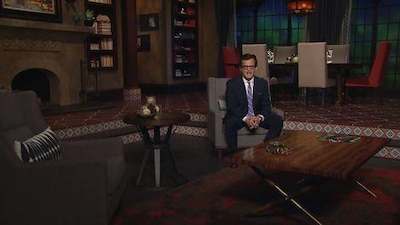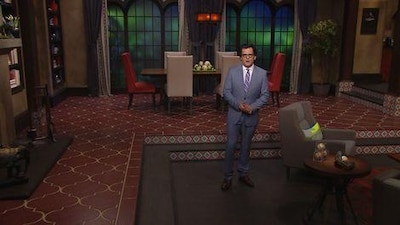Sergeant York

Brief Synopsis
Cast & Crew
Howard Hawks
Gary Cooper
Walter Brennan
Joan Leslie
George Tobias
Stanley Ridges
Film Details
Technical Specs

Synopsis
The Valley of the 3 Forks of the Wolf, located in the Cumberland Mountains in Tennessee, is the home of the Yorks, a family of poor mountain farmers. In the spring of 1916, a drunken Alvin C. York, the oldest son, interrupts a church service attended by his mother, sister Rosie and brother George, when he and two friends take potshots at a nearby tree. Later, at Mother York's request, Pastor Rossier Pile speaks to Alvin, but has little influence on the hell-raising young man. One day, while hunting, Alvin encounters Gracie Williams and instantly decides to marry her. When he tells this plan to Gracie, however, she turns him down cold. Convinced that Gracie's objections would be overcome if he had more money, Alvin determines to buy a rich piece of bottomland to farm. He works day and night to earn the money, collecting the final amount after winning a shooting contest, but when he brings the money to Nate Tompkins, the owner, he learns that Nate sold the land a few minutes earlier to Zeb Andrews, his rival for Gracie's hand. Alvin proceeds to get very drunk and then, on his way to kill Zeb, is hit by lightning. Taking this as a sign from God, Alvin starts to attend church and makes his peace with Zeb and Nate. Soon, a surprised Zeb offers to let Alvin sharecrop the land he just bought. When the United States enters World War I, Alvin refuses to register for the draft, believing that killing, even as a patriotic duty, is against the Bible. Pile convinces him to register as a conscientious objector, but Alvin's request for "C.O." status is denied and he is drafted. At Camp Gordon in Georgia, Alvin's shooting so impresses his superiors that they promote him to corporal and make him an instructor. Although he agrees to teach, Alvin turns down the promotion because of his religion. His superior officer, Major Buxton, counters by arguing the importance of defending freedom, and gives Alvin a furlough to think over the proposition. In the end, Alvin decides to accept the promotion, and later, his unit sails for France to fight in the Argonne offensive of 1918. As the men advance through an area surrounded by Germans, Alvin single-handedly kills twenty Germans and convinces 132 more to surrender. Together with the seven men remaining from his unit, Alvin brings the German prisoners back to headquarters. He is awarded a French medal, the Distinguished Service Cross and the Congressional Medal of Honor. After returning to a hero's welcome in New York, Alvin wants nothing more than to go back to Tennessee. He refuses all the money offered to him, explaining that he did what he did because he had to and is not proud of what happened. Back in Tennessee, Alvin is reunited with his family, his beloved mother, and Gracie. Despite Alvin's wish not to gain by his actions, the people of Tennessee have purchased the bottomland farm and paid for a house to be built on the land where Gracie and Alvin will start their married life.

Director

Howard Hawks
Cast

Gary Cooper
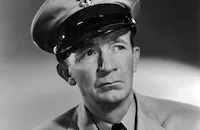
Walter Brennan
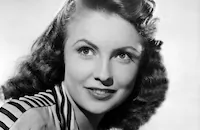
Joan Leslie

George Tobias

Stanley Ridges

Margaret Wycherly

Ward Bond
Noah Beery Jr.
June Lockhart

Dickie Moore

Clem Bevans
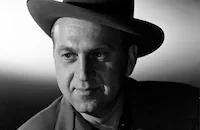
Howard Da Silva
Charles Trowbridge
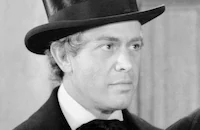
Harvey Stephens
David Bruce

Charles Esmond
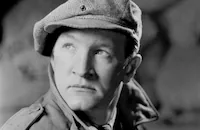
Joseph Sawyer
Pat Flaherty
Robert Porterfield
Erville Alderson
Frank Wilcox

Donald Douglas
Lane Chandler
Frank Marlowe
Jack Pennick
James Anderson
Guy Wilkerson

Tully Marshall
Lee "lasses" White
Jane Isbell
Si Jenks
Herbert Heywood
Eddy Waller
Frank Mcglynn
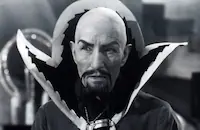
Charles Middleton
Henry Hall
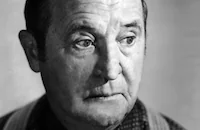
Frank Orth
Arthur Aylsworth

Elisha Cook Jr.
William Haade
Jody Gilbert
Victor Kilian
Mickey Rentschler
Sammy Mckim
Sonny Bupp
Joseph King
Pat West
Harry Strang
Bill Phillips

Walter Sande
Frank Faylen
Murray Alper
Gaylord Pendleton

Charles Drake
Ray Cooke
Paul Phillips
Clyde Cook
Will Stanton
Frederick Giermann
Arno Frey
William Yetter
Rolf Lindau
Sigfried Tor
Eugene Beday
James Bush
Victor Zimmerman
William Forrest
Theodor Von Eltz
Roland Drew

Russell Hicks
Joseph Gerard
Jean Del Val
Selmer Jackson
Edwin Stanley

Jack Mower
Eddie Graham
Frank Mayo
Al Lloyd
Nat Carr
John Dilson
Creighton Hale

George Irving

Ed Keane
Douglas Wood

Byron Barr
Pat Mcveigh

Ray Teal
Ralph Urmy
Wallace Scott
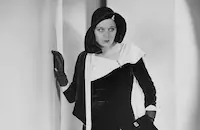
Rita La Roy

Lucia Carroll
Kay Sutton
Crew
Lucille Anderson
Teddy Blue
George Bookasta
Eugene Busch
Captain Chester Carlisle
Harry Chandlee
Joe Cramer
Lou Dolgin
Arthur Edeson
Frank Evans
Abem Finkel
Leo F. Forbstein
Hugo Friedhofer
Oliver S. Garretson
Albert Greene
Al Greenway
Ethel Griswald
William Guthrie
Lou Hafley
Donoho Hall
Howard Hawks
William Holmes
John Hughes
John Huston
Mac Julian
Howard Koch
Smoke Kring
Jesse L. Lasky
William R. Lasky
Fred Maclean
Paul Malcolm
Jack Mcconaghy
Ray Meeker
Harold Noyes
Charles O'bannon
Sol Polito
John Prettyman
Tom Reilly
Rita Ross
Ted Schultz
Vincent Sherman
Eric Stacey
Max Steiner
Jeanette Storck
Everett Sullivan
Jack Sullivan
Slim Talbot
Carl Voss
Paul Walters Capt, F.a.r.
Edith Westmore
Ern Westmore
Perc Westmore
William Yetter

Photo Collections
Videos
Movie Clip






Trailer
Hosted Intro
Film Details
Technical Specs

Award Wins
Best Actor
Best Editing
Award Nominations
Best Art Direction
Best Cinematography
Best Director
Best Picture
Best Score
Best Sound
Best Supporting Actor
Best Supporting Actress
Best Writing, Screenplay
Articles
Sergeant York
The making of Sergeant York (1941) was a case of determination and persuasion. The dedicated producer, Jesse Lasky, was adamant about bringing the man's life to the silver screen. In conjunction with legendary Warner Brothers producer Hal Wallis (Casablanca, 1942), Lasky unsuccessfully pursued Alvin C. York for the rights to his life story for several years, with the shy Tennessee man, happily living as a local farmer, resisting every time. With WWII approaching, Lasky made the case that York's story was more important than ever. After numerous requests and persistence, York finally agreed - but only on three conditions. First, York's share of the profits would be contributed to a Bible School York wanted constructed. Second, no cigarette smoking actress could be chosen to play his wife. Third, that Gary Cooper, and only Gary Cooper, could recreate his life on screen. Cooper at first turned down the role, but when York himself contacted the star with a personal plea, Cooper agreed to do the picture.
Finding a director for Cooper turned out to be an arduous task for Lasky and Wallis. Warner Brothers and Lasky had spent considerable time and money prying Cooper away from his commitments at Goldwyn (they succeeded only after swapping Cooper for Bette Davis, who would appear in Goldwyn's The Little Foxes, 1941). Cooper decided on previous collaborator Howard Hawks, an unusual choice at the time for a dramatic biopic. In the end, it was an inspired choice - Hawks' combination of gritty action and fluid camera movement gave the WWI scenes of York a vivid immediacy. But the director achieved equal success directing Cooper in the dramatic tale of York's humble Tennessee origins and pacifist beliefs; beliefs the director surely could not have shared.
The life of Alvin C. York, a genuine war hero for both his reported war exploits and his humble American roots, was still very much a well-known American figure. And Sergeant York resonated well with US audiences and American overseas troops at a time when the possibility of another war was very real. Cooper, unable to participate in WWII due to his age and an old injury to his hip, felt strongly that Sergeant York was his way of contributing to the cause. Cooper later said "Sergeant York and I had quite a few things in common, even before I played him in screen. We both were raised in the mountains - Tennessee for him, Montana for me - and learned to ride and shoot as a natural part of growing up. Sergeant York won me an Academy Award, but that's not why it's my favorite film. I liked the role because of the background of the picture, and because I was portraying a good, sound American character."
Critical acclaim for the film was unanimous, especially Cooper's performance, with Variety calling the film "a star-spangled attraction of unlimited box-office value - film biography at its best," As to the question of the film's propaganda themes, some New York critics were dismayed. Bosley Crowther for the New York Times noted "The suggestion of deliberate propaganda is readily detected here; the performance of Gary Cooper in the title role holds the picture together magnificently and even the most unfavorable touches are made palatable because of him." Variety went on to say, "In Sergeant York the screen has spoken for national defense. Not in propaganda, but in theater."
The film was a tremendous wartime success and the top-selling film of 1941. It was nominated for a whopping eleven Academy Awards, but only garnered two - one for Cooper as Best Actor and one for William Holmes for editing. Cooper also won the New York Film Critics award for his performance. Walter Brennan, having already received a record three Academy Awards in the Best Supporting Actor category (for the films The Westerner (1940), Come and Get It (1936), and Kentucky, 1938), was nominated for his role as the pastor Rosier Pile (he lost to Donald Crisp for his performance in John Ford's How Green Was My Valley). Cooper's acceptance speech typified so many of the actor's performances when he said "It was Sergeant Alvin York who won this award; Shucks, I've been in this business sixteen years and sometimes dreamed I might get one of these things. That's all I can say! Funny, when I was dreaming, I always made a good speech." As he and Stewart left the stage, the Oscar stayed behind on the podium.
Director/Producer: Howard Hawks
Producer: Jesse Lasky, Hal B. Wallis
Screenwriter: Harry Chandler, Abem Finkel, John Huston, Howard Koch
Cinematographer: Arthur Edeson, Sol Polito
Composer: Max Steiner
Editor: William Holmes
Art Director: John Hughes
Cast: Gary Cooper (Sgt. Alvin C. York), Walter Brennan (Pastor Rosier Pile), Joan Leslie (Gracie Williams), Ward Bond (Ike Botkin), Stanley Ridges (Maj. Buxton), Margaret Wycherly (Mother York)
BW-135m. Closed captioning. Descriptive Video.
by Richard Steiner
To learn more about World War I, visit The National World War One Museum.

Sergeant York
Gary Cooper in Sergeant York on DVD
Of course, the movie Sergeant York (1941) already ensured that no one would ever forget York's feat. A huge commercial and critical hit in its day, the movie has endured as a beloved classic of the studio era - a classic that has finally found its way onto DVD. For some strange reason, Warner Home Video has never before released it in the format. To the studio's credit, however, they have now issued it with the proper attention it deserves: a two-disc special edition with a fascinating commentary track, documentaries on York and star Gary Cooper, and a short subject and cartoon of the era. The picture itself is beautifully crisp - the best this film has ever looked on the small screen - and the extras are quite satisfying.
For viewers who haven't seen Sergeant York in a while (or ever), it may come as a surprise that the combat sequences take up very little screen time and don't even begin until well into the film's second hour. Most of the movie deals with establishing York's character in rural Tennessee (well-evoked by the Warner Bros. art department, which sent researchers to the state) and his developing religious convictions which cause him to declare himself a conscientious objector.
That conflict between religious beliefs and war is subtly established in the film right from the get-go, as our introduction to York - shooting wildly and drunkenly from atop a horse - comes while Pastor Pile (Walter Brennan) is delivering a sermon. This is one of many keen observations offered by Jeanine Basinger on her commentary track. Basinger offers everything a viewer could want and more. She relates facts about York and the film's making but also lends context and insight into how the movie works on the level of craft, citing specifics of the screenplay, production design, acting styles and so on, in an accessible way that enriches one's understanding of the movie.
Basinger is an expert in war movies, having written a book on the subject (to which this reviewer made a contribution), and she is particularly interesting on how WWI movies of the late 1930s became less pacifistic as a way of prepping Americans for WWII - of conditioning them to accept the fact that war was sometimes necessary. Sergeant York drove the point home harder than any of those films in that it was blatantly about such a shift. "The change York underwent from pacifist to war hero," Basinger says, "paralleled the change America itself would also have to go through during the year 1941, ...[from] isolationism to involvement." It's quite a persuasive argument. Listening to all this, one becomes aware of the power of the moviegoing experience in the old days. A lot more people went to the movies back then, and popular movies could become strong, vital pieces of the American social fabric because they were shared experiences in a way that no movie today could ever duplicate - simply because the number of moviegoers can't compare. Of course, the craftsmanship of all those involved in making Sergeant York had a vital role in making such a powerful effect possible, and again, Basinger delves into many examples throughout her commentary.
The documentaries on Disc 2 are well worth watching. The first is a making-of featurette narrated by Liam Neeson which details how York was convinced to allow the film to be made, and which lends insight into director Howard Hawks' working methods. Joan Leslie, now 81, appears on-camera to offer some delightful reminiscences and shows herself to be still beautiful and still spry. The second is a documentary on Gary Cooper which was originally made for TNT by Richard Schickel. Narrated by Clint Eastwood, the piece is laden with clips from Cooper's entire career and even shows some home movies. It's all extremely well-edited and moves quickly.
Rounding out the DVD are a short subject, Lions For Sale, and a Porky Pig cartoon, Porky's Preview, which contains a cartoon-within-a-cartoon.
Sergeant York is available as a stand-alone purchase or as part of Warner Home Video's Gary Cooper: The Signature Collection. The other titles in the collection are The Fountainhead (1948), Dallas (1950), Springfield Rifle (1952) and The Wreck of the Mary Deare (1959).
Look fast for Elisha Cook, Jr., playing the piano in a bar fight scene.
For more information about Sergeant York, visit Warner Video. To order Sergeant York, go to TCM Shopping.
by Jeremy Arnold
Gary Cooper in Sergeant York on DVD
Quotes
Where did ya learn to shoot York?- Sergeant
Well I ain't never learned Sergeant, folks back home used to say I could shoot a rifle before I was weaned. But they was exaggeratin' some.- Alvin
Folks say you're no good 'ceptin' for fighting and hell raising- Gracie Williams
Ain't nobody ever cut 5 centers, lessen' it were Danile Boone- Ike Botkin
Well I'm as much agin killin' as ever sir. --- But it was this way Colonel. --- When I started out I felt just like you said, but when I hear them machine guns a goin' and all them fellas are droppin' around me --- I figured them guns was killin' hundreds maybe thousands and there wern't nothin' any body could do, but to stop them guns. And that's what I done.- Alvin
Therefore render unto Caesar the things that are Caesar's and unto God the things that are God's.- Alvin
...What we done in France we had to do. And some as done it, didn't come back. And that kind of thing ain't for buying and selling.- Alvin
Trivia
The actual firearm used by York to dispose of a line of seven Germans was not a Luger as depicted in the film, but rather a .45 Colt automatic. The Luger was preferred for the filmmaking, however, purely on the basis that they couldn't get the .45 to fire blanks.
Alvin York allowed the making of a movie based on his life only under the condition that Gary Cooper should play him.
Notes
The film opens with the following written statement: "We are proud to present this picture and are grateful to the many heroic figures still living, who have generously consented to be portrayed in its story. To their faith and ours that a day will come when man will live in peace on earth, this picture is humbly dedicated."
During the battle of Argonne (8 October 1918) the real Alvin C. York (1887-1964) led a detachment in attack on a German machine gun nest and after the detachment was pinned down by enemy fire, he charged another machine gun nest and, though alone, captured ninety men. While marching with his prisoners, he captured forty-two more prisoners at a third machine gun nest. York explained his exploits by revealing that he used a strategy learned from shooting turkeys. In that strategy, he would shoot the last turkey first and thus was able to eliminate most of the turkeys before the ones in the front realized what was happening. (The film's Alvin York used the same technique.) York was promoted to sergeant and later was awarded the Medal of Honor and the French Croix de Guerre. On his return to the United States, he received the gift of a farm in Tennessee and donated money to the York Foundation for support of an industrial school and a Bible school in Tennessee. Shortly before his death, York, whose only income was Social Security, disability and a small monthly stipend granted to Medal of Honor holders, was almost destitute and owed the U.S. government over $80,000 in taxes on the money he received for film rights. General John J. Pershing called York "the greatest civilian soldier of the war," and Marshal Ferdinand Foch said to him, "What you did was the greatest thing acomplished by any private soldier of all the armies of Europe."
The film's working title was The Amazing Life of Sergeant York. Hollywood Reporter news items add the following information about the production: A minimum budget of $2,000,000 was allotted for the film. William Keighley was scheduled to direct, but when the starting date was postponed, he went on to another film. According to memos in the Warner Bros. Collection at the USC Cinema-Television Library, Jesse Lasky suggested Jane Russell for the part of "Gracie" and Helen Wood, Linda Hayes and Suzanne Carnahan tested for the role; Mary Nash tested for "Mother York," and Pat O'Brien and Ronald Reagan were tested for the role of "Sergeant York." Charles Root was also considered for a role in the film. According to the daily production reports included in the film's file at USC, Vincent Sherman directed some scenes while Howard Hawks went to a racetrack.
A press release adds the following information: Technical advisor Donoho Hall was an author and authority on the dialects and customs of the Southern mountaineers. Eugene P. Walters was head military technical director and William Yetter, former Sergeant Major of the Imperial German Army, advised the filmmakers on the German military. A revolving mountain set was built on Warner Bros.' largest sound stage. The set represented a section of the Tennessee Valley of the Three Forks of the Wolf, where Alvin York was born. The mountain, which was covered by cedar, pine and oak trees, and which included a 200 ft. stream, was designed to present sixteen different basic camera angles. Some of the battle scenes were filmed in the Simi Hills, forty miles from Hollywood. Additional location footage was shot in the Santa Susana Mountains and at the Warner Bros. Ranch. A contemporary source states that some of the mountain scenes were filmed in back of York's house in Pall Mall, TN. Because of the 1941 draft, the filmmakers had difficulty finding enough young male actors to play the soldiers and were forced to hire students from local universities. York had been approached by producer Jesse Lasky several times, beginning in 1919, to allow a movie to be made of his life, but had refused, believing that "This uniform ain't for sale." Lasky convinced York that, with war threatening in Europe, it was his patriotic duty to allow the film to proceed. Gary Cooper was York's own choice for the role.
The New York Times review notes that the premiere at the Astor Theater was attended by delegates from Tennessee, government and army officials, as well as Gary Cooper and Alvin York. York was greeted by Colonel George Buxton, the wartime commander of the 82nd division of the United States Army. Later York said, "Millions of Americans like myself must be facing the same questions, the same uncertainties which we faced and I believe resolved for the right some twenty-four years ago." A Hollywood Reporter news item reports that in general release, the film showed at higher than usual admission prices that ranged from $.75 to $1.10.
This highly regarded film was chosen as one of the Film Daily Ten Best Pictures of the Year. It received numerous Academy Award nominations including Best Picture, Sound Recording, Original Screenplay, Music, Black and White Art Direction, Interior Decoration and Black and White Cinematography. Walter Brennan and Margaret Wycherly were nominated as Best Supporting Actor and Best Supporting Actress, respectively, and Howard Hawks was nominated for Best Director. Gary Cooper won an Oscar for his portrayal of Sergeant York, and William Holmes received an Academy Award for film editing. Cooper also was awarded the Veterans of Foreign Wars Distinguished Citizenship medal for his portrayal.
A February 18, 1941 Hollywood Reporter news item notes that Gary Cooper and Walter Brennan recreated their roles on the Veterans of Foreign Wars tenth anniversary "Hello America" radio program on February 2, 1941 over the NBC Blue network. A press release dated July 2, 1941 states that Sergeant York was the first motion picture to be made into a stage play. The film was transcribed by Robert Porterfield, who made his debut in this film. No information about the play's production was found. The film was reissued in April 1949.

Miscellaneous Notes
Released in United States Winter January 1, 1941
Released in United States September 9, 1941
Released in United States March 1976
Broadcast in USA over TBS (colorized version) May 16, 1988.
Released in United States Winter January 1, 1941
Released in United States March 1976 (Shown at FILMEX: Los Angeles International Film Exposition (Special Programs - The Americas: A National Portrait) March 18-31, 1976.)
Released in United States September 9, 1941



